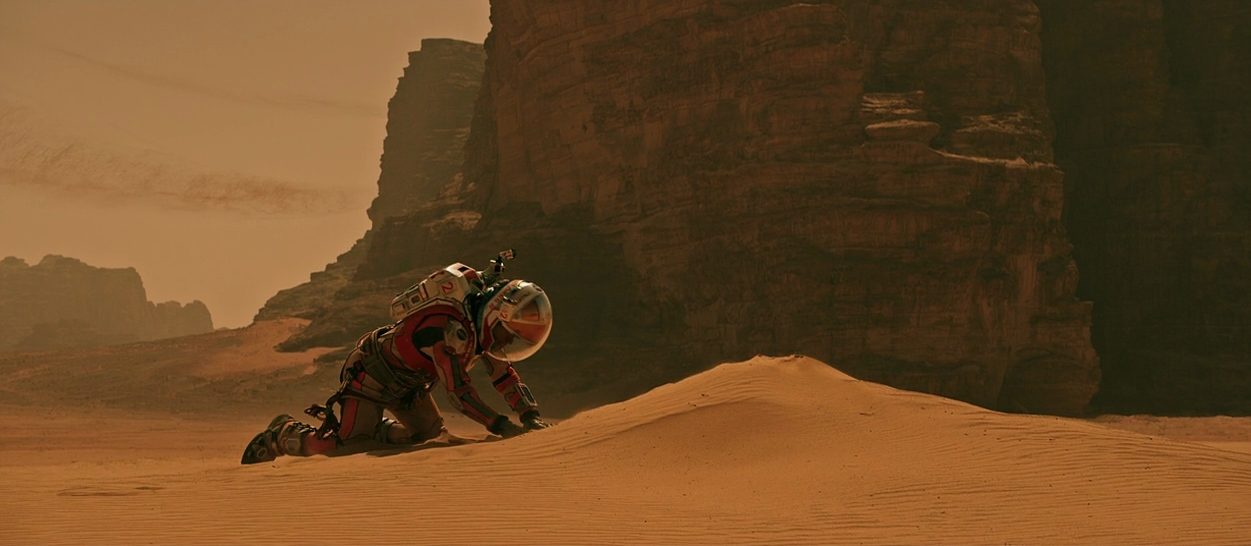
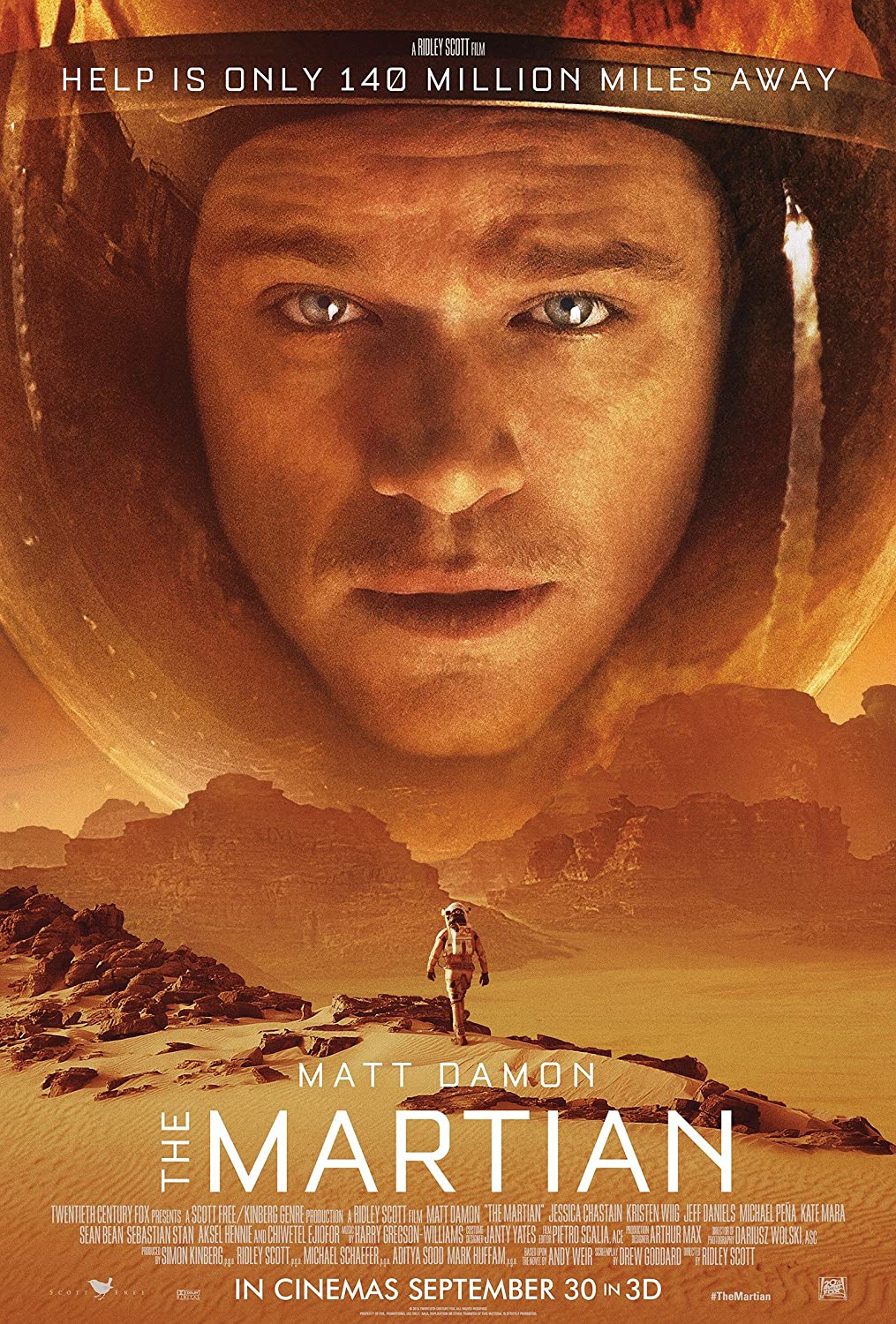
“I don’t want to come off as arrogant here, but I’m the greatest botanist on this planet.”
Ridley Scott’s The Martian strives to deliver a scientifically accurate spacefaring adventure that adheres to the laws of physics. To present a realistic scenario that might plausibly unfold if we ever decide to abandon a man on the red planet. It succeeds in this regard (with a few notable exceptions) thanks to a thoroughly researched source novel from Andy Weir and input from James L. Green, the Director of the NASA Planetary Science Division.
During a surprise dust storm on the surface of Mars, astronaut Mark Watney (Matt Damon) is struck by a broken antenna and carried off into the night. Presuming him dead, the rest of the six-person Ares III crew is forced to abort their mission and embark for earth aboard the Hermes. But of course, Watney is not dead. Not quite. Awakening with the antenna protruding from his abdomen, his blood congealed around the puncture in his suit, he makes his way back to the “Hab” and performs emergency self-surgery. As he recovers from his ordeal, he gradually takes stock of his dire situation. With limited food stores, no way to communicate with his crew or NASA HQ, and no way of getting off the planet, Watney makes the stubborn decision to not give up. To not give into the cruel twist of fate that left him on this desolate planet to die. Taking an inventory and doing some back-of-the-napkin calculations, Watney realizes that his limiting factor is food. He can survive for quite a while on the rest of the team’s rations, but not long enough to wait for the next Ares mission which is four years and 2,000 miles away.
And so he puts his brain to work. In addition to his ace engineering skills, Watney is also a learned botanist and it is only a few days into his ordeal that a eureka moment comes: using the crew’s vacuum sealed dookies mixed with Martian soil and manufacturing water from leftover jet fuel, he plants a garden of potatoes, the only renewable food source that NASA saw fit to provide the Ares III crew. Soon he’s making forays in the rover and unburying a nuclear battery to keep himself warm on a month long journey to locate the Pathfinder and contact NASA.
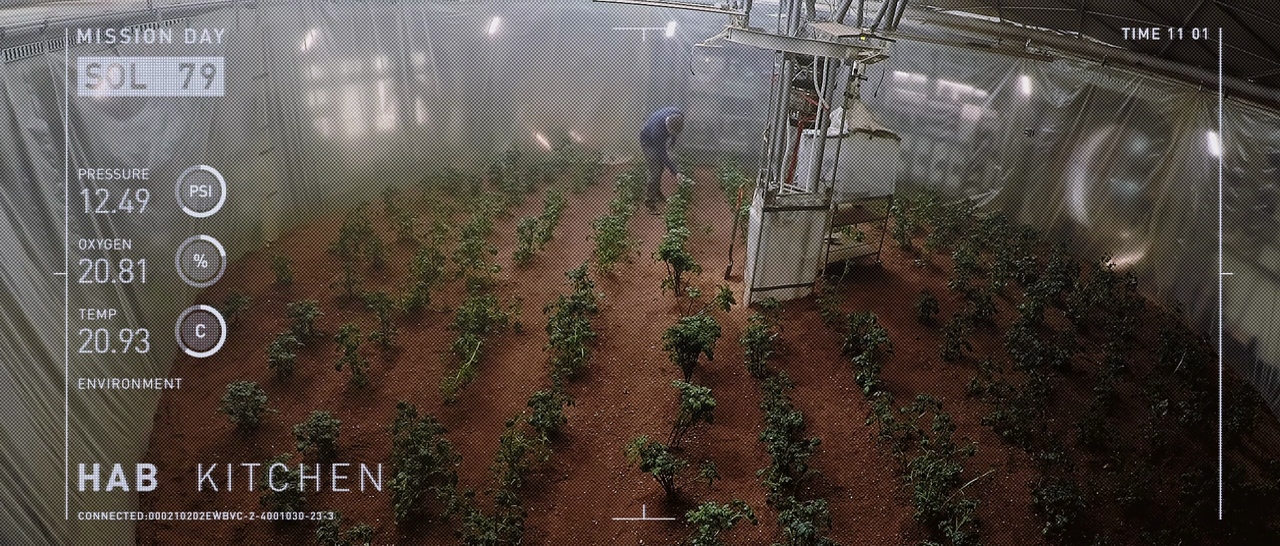
The Watney solo portion of The Martian is absolutely fantastic. Conveyed to the audience in a variety of modes—voiceover, montage, video diary—Watney’s progression from surviving to exploring to innovating to conquering is an inspiring ode to resourcefulness and learning à la Heinlein. It’s also terrifically funny—which is perhaps unexpected (if you’ve not read the book) until you consider that there is never really a chance that Watney is going to die. Do you really think a studio is going to put up $100M for a special effects laden man vs. nature epic only to kill off the main character at the end? Of course not. In this light, Watney’s wisecracking gallows humor suits the tone just right. Damon is a perfect fit for the dynamic role, operating almost entirely on his own and employing charisma and comedic timing that really shine. Whether he’s making offhand confessions as he whittles Martinez’s (Michael Peña) crucifix to make kindling, ridiculing Commander Lewis’s (Jessica Chastain) fondness for disco music (which provides a deliciously kitschy soundtrack), stubbornly using crushed vicodin as dipping sauce when he runs out of ketchup, or accidentally blowing himself up and duct taping the crack in his face shield, Damon is simply outstanding.
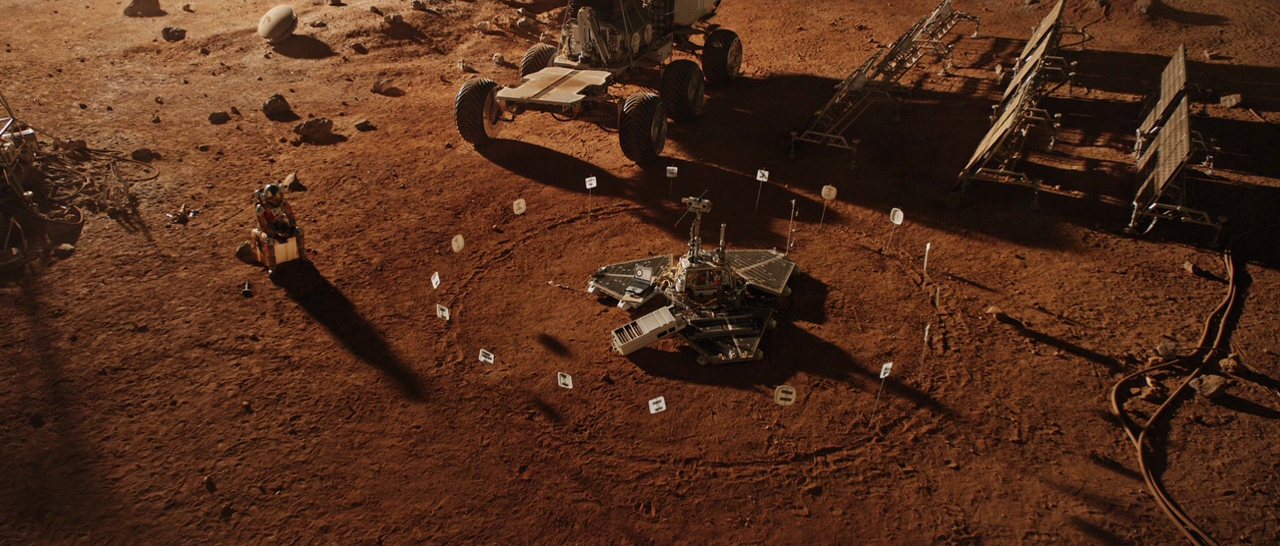
Alas, Watney’s on-planet ordeal is only half the movie, and the other half isn’t quite as effective. Occurring alongside Watney’s inspiring tale and eventually merging with it is a scatter-brained story about the inner workings at NASA, where a young satellite controller (Mackenzie Davis) notices the movement of the Ares mission equipment. Intuiting that Watney must be alive, the discovery is run up the chain of command, which includes a media relations coordinator (Kristen Wiig), a flight director (Sean Bean), the manager of Mars missions (Chiwetel Ejiofor), and the director of NASA (Jeff Daniels). This portion of the film flits by in a series of comedic asides that gradually lead up to NASA coordinating with the Chinese National Space Administration to send Watney a supply drop that will last him until Ares IV. There’s so much going on here—names and titles and locations and urgent decisions—that there’s barely any chance for the characters to settle in beyond surface level comedy and checking plot boxes.
But just like you don’t make an expensive modern day Robinsonade in which the hero bites the dust, you don’t cast someone like Jessica Chastain as the commander of Watney’s fated mission just to have her turn tail and head back to earth. In one of the NASA storyline’s best and funniest moments, a young astrodynamicist (Donald Glover) explains his wild plan to slingshot the Hermes around the earth and fling it back toward Mars, prolonging the crews’ mission but cutting Watney’s stay on Mars in half. He’s smarter than most of the other people in the room and so he has to demonstrate his idea in layman’s terms, using office items and people to act out the idea he just explained with a bunch of jargon. “Okay, let’s pretend that this stapler is the Hermes and you are… I’m sorry, what’s your name again?” “Teddy… I’m the director of NASA.” “Cool, Teddy. You’re earth.” And so Lewis, Martinez, and the rest of the Hermes crew—Johanssen (Kate Mara), Beck (Sebastian Stan), and Vogel (Askel Hennie)—head back to Mars to rescue their friend.
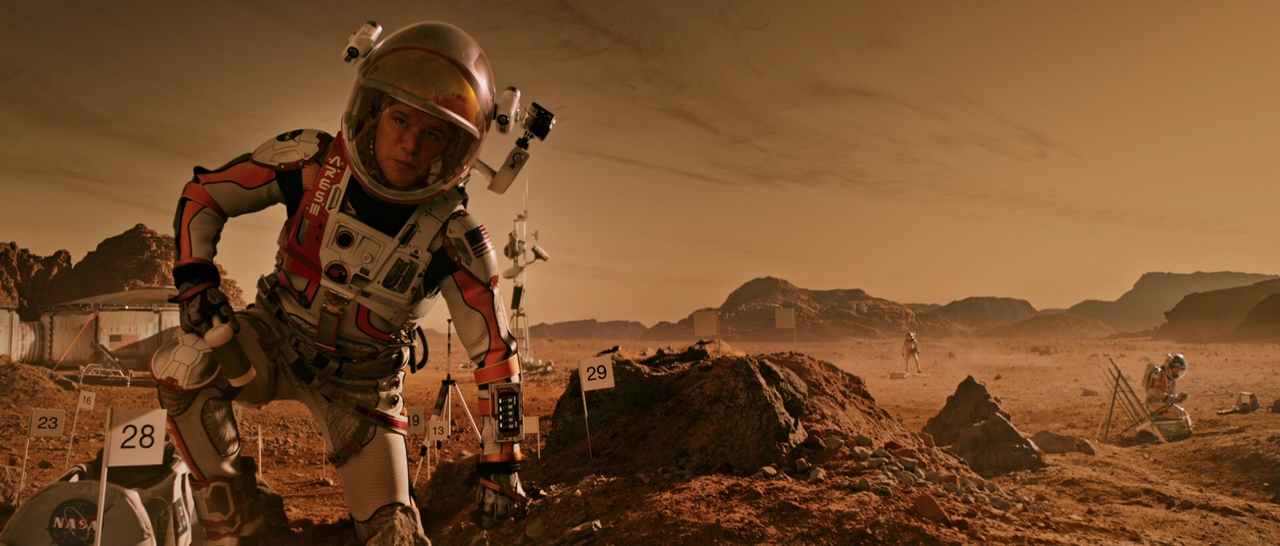
Unfortunately, following Weir’s outline so faithfully places Sir Ridley in a bit of a pickle. You see, Weir’s bestselling novel is a nerdy engineer’s wet dream: equations, calculations, how-to manuals, flight trajectories, payloads, chemical reactions. The kind of book that gets labeled as hard science fiction, offering a technologically-augmented man-against-the-elements storyline that allows the protagonist to prove man’s resourcefulness, determination, and intelligence. Weir balances his survival guide tendencies with a sharp wit and R-rated humor that renders the book palatable to the general reader. However, it’s emotionally and spiritually inert. Its meat and potatoes are its bonafide science and raunchy humor. Scott preserves these elements (though opts for the PG-13 rating), but the perfunctory treatment of anything outside of the tactical objectives and wisecracks is quite underwhelming. There’s such a large and talented cast here that is mostly wasted on characters who serve a function but barely exist outside of their role in the plot. Emotional cues arrive on schedule but feel empty and uninteresting, placed there only to fulfill expectations but without any real thought behind them. Likewise, there’s almost no sense of awe at the prospect of venturing into the unknown; no sense of wonder at the mysteries of the universe.
Ultimately, though, The Martian is a heck of a crowd-pleasing science fiction film. One wishes that it might have set its sights a little higher, but its fact-based science and cheeky humor are more than enough to sustain its lengthy runtime. A little less focus on the NASA rescue mission tactics, a little more Matt Damon, and, most importantly, a bit more space given to marvel and contemplate humanity’s smallness, and it could have been a classic. But I’ll settle for a great popcorn movie.